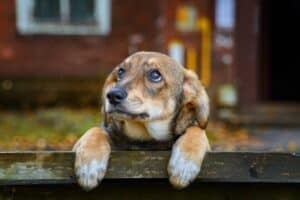Companion animal ownership is construed as keeping any domestic animal from a horse to a mouse as a pet.

Some people go further in their diversity by wanting to own, enjoy, observe and make heads turn with having terrapins, snakes, lizards, tortoises, frogs etc. Certain countries permit chinchillas, ferrets and gerbils as pets. Many countries insist on permits for people to possess certain creatures, also depending on their origin, rarity and possible disease transmission.
Then there are those latent entomologists, malacologists and arachnologists who are obsessed with having insects, snails and spiders as pets. In the true sense of the word one cannot bond with a beetle, snail, scorpion or spider although these creatures do eventually acquire a conditioning response.
They become tolerant to human handling without hiding, retracting in to a shell or curling up to protect themselves against danger. Conserving these invertebrates and observing them in a habitat is a huge responsibility with husbandry. These creatures become totally reliant on human management to create a suitable environment for existence, places of refuge, the appropriate diet and environmental thermoregulation. For the avid competent collector there is a positive educational aspect to housing exotic creatures.
There are veterinarians today who specialise in invertebrate medicine to control diseases such as varoosis in bees. Veterinarians, in certain parts of the world where the demand has required it, have formed a Veterinary Invertebrate Society and, amongst other aspects of science, they endeavor to license products for disease control. Sometimes these invertebrates are used for research purposes or may be a national essential industry as apiaries for honey production and plant pollination. Certain insects are bred for conservation purposes or as a diet for lizards and chameleons.
The accommodation of invertebrates must be comfortably spacious to permit natural movement, activity and facilities for moulting, especially with praying mantis and stick insects. The habitat must provide optimal lighting, cycles of light and dark, humidity and temperature so that it simulates the natural situation to the best of one’s research and knowledge.
Housing has to be readily hygienically cleaned without using chemicals detrimental to the creatures. The habitat must be constructed in such a way that the invertebrate cannot suffer injury or trauma by getting in close proximity to a heat source, ultraviolet light or drowning in deep water.
The humidity varies according to the invertebrate’s requirements in nature. Slugs and snails require a damp environment which can be more difficult to maintain hygienically due to the possibility of the build-up of bacteria and the water being static and constant.
Molluscs such as snails and slugs require high calcium levels in their diet, silkworms require a high protein food content for silk production, spiders require live prey, stick insects feed only on certain plants, caterpillars, also known as larvae, of certain moths and butterflies may rely on only one type of plant whereas cockroaches will eat anything.
Their life-dependent essential specialised diets place a hugely vigilant task on the people responsible for their survival. Plant-dependent species should receive fresh food at regular intervals with the foliage immersed in water to prevent decay but suitably safe to prevent the creature from drowning therein.
Read more on this topic next week.






